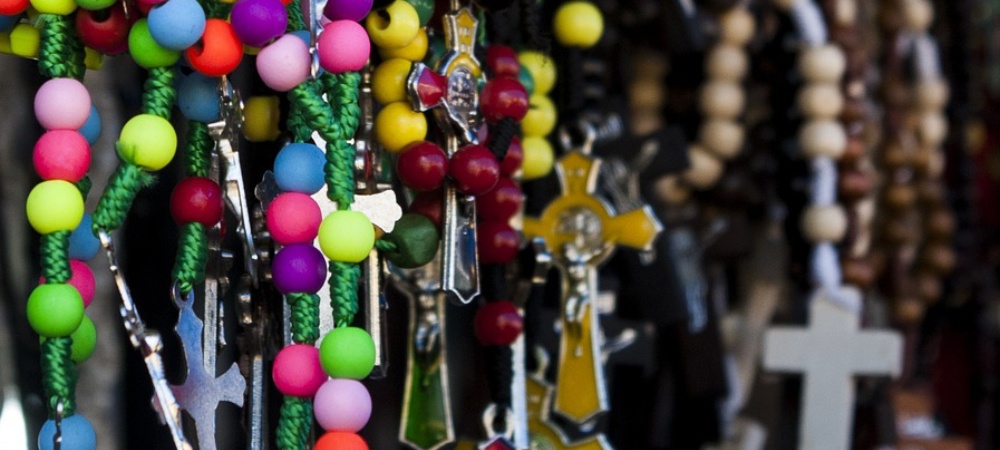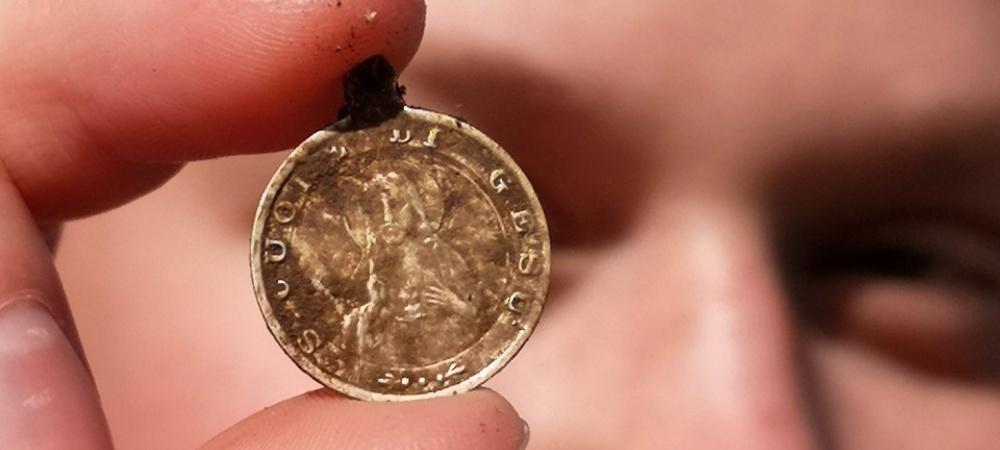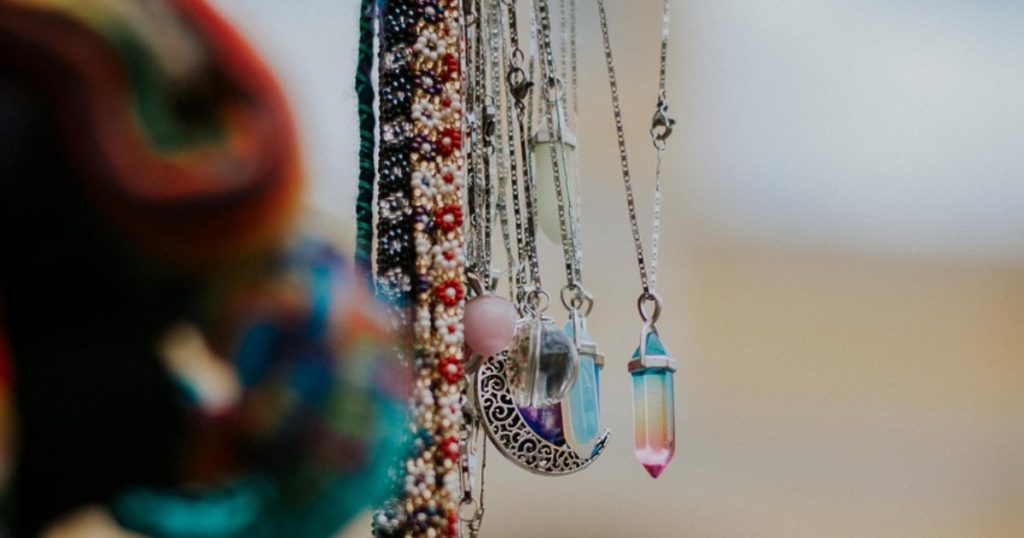Here’s a Pendant Size Chart to help you find the perfect fit for your necklace :
- Small Pendant : 1/4 inch to 1 inch in length – Ideal for delicate chains or layered necklaces. These are perfect for everyday wear and add a subtle accent to your outfit.
- Medium Pendant : 1 inch to 2 inches in length – Versatile and suitable for both casual and formal occasions. They make a statement without being too overwhelming and can complement various necklines.
- Large Pendant : 2 inches or longer – Best suited for making a bold statement. These pendants stand out and can be the focal point of your outfit. Pair them with a simple chain to let them shine.
The size of the pendant should also complement your body frame and personal style. Feel free to experiment with different sizes to find what suits you best!
Understanding Pendant Sizes
When it comes to understanding pendant sizes, there are a few key factors to consider :
- Overall Dimensions: This includes the length, width, and depth of the pendant. These dimensions will determine how large the pendant appears when worn.
- Chain Length: The length of the chain on which the pendant hangs can affect how the pendant appears. A longer chain may make the pendant seem smaller, while a shorter chain can accentuate its size.
- Design Elements: Intricate designs or embellishments on the pendant can make it appear larger, even if its physical dimensions are relatively small.
- Personal Preference: The perceived size of a pendant can vary depending on individual tastes and styles. What may seem large to one person might be just right for another.
How to Measure for Pendant Size
Measuring for pendant size is crucial to ensure it complements your outfit and body proportions. Here’s a step-by-step guide :
- Choose Your Chain Length : Decide where you want the pendant to hang on your body. Common lengths are 16″, 18″, 20″, and 24″. For a pendant to sit close to the neckline, opt for shorter lengths. Longer lengths are ideal for pendants that need to hang lower.
- Measure Your Neck : If you’re unsure about the chain length, measure your neck with a flexible tape measure to get an idea of how the chain will fit. Add a few inches to this measurement to accommodate the pendant and clasp.
- Consider the Pendant Size : The size of the pendant should complement your body size and outfit. Larger pendants make a bolder statement, while smaller ones offer a delicate touch.
- Measure the Pendant : If possible, use a ruler or measuring tape to gauge the pendant’s size. Measure the length and width, and consider its overall bulkiness.
- Visualize the Proportions : Lay the chain on a flat surface and place an object of similar size to the pendant over it. This helps you visualize how the pendant will look once worn.
- Trial and Error : If you’re still unsure, try on different pendant sizes and chain lengths to see what suits you best. Adjustments can always be made, such as swapping out chains or resizing pendants.
- Consider Personal Style : Ultimately, choose a pendant size that aligns with your personal style and preferences. Whether you prefer understated elegance or eye-catching statements, the pendant should reflect your taste.

Choosing the Right Pendant Size for Your Necklace
Choosing the right pendant size for your necklace can make a significant difference in how it complements your overall look. Here are some tips to help you select the perfect pendant size:
- Consider Your Body Proportion : The size of the pendant should complement your body frame. If you’re petite, opt for smaller pendants that won’t overpower your stature. For those with a larger build, larger pendants can make a bolder statement.
- Necklace Length Matters : The length of your necklace chain will influence how the pendant sits on your chest. Longer chains, like opera or rope length, can accommodate larger pendants, while shorter chains, such as chokers or princess length, are better suited for smaller pendants.
- Occasion and Style : Think about the occasion and your personal style when choosing pendant size. For everyday wear, smaller pendants are versatile and easy to style. However, for special occasions or to make a statement, larger pendants can add drama and flair to your outfit.
- Neckline of Your Outfit : Consider the neckline of the clothing you’ll be wearing with the necklace. Higher necklines, like turtlenecks or crew necks, pair well with smaller pendants that sit closer to the neck. Lower necklines, such as V-necks or scoop necks, provide more space for larger pendants to shine.
- Facial Features : Take into account your facial features when selecting pendant size. Smaller pendants can draw attention to delicate features, while larger pendants can balance out strong facial features.
- Personal Preference : The size of the pendant should align with your personal style and preference. Choose a size that makes you feel comfortable and confident when wearing it.
Common Pendant Sizes and Their Meanings
Pendants come in various sizes, each with its own significance and symbolism. Here are some common pendant sizes and their meanings :
Small Pendants (less than 1 inch) :
- Delicacy : Small pendants often symbolize delicacy and subtlety. They can represent understated elegance and simplicity.
- Minimalism : These pendants are favored by those who appreciate minimalist designs and subtle statements.
- Attention to Detail : Small pendants may signify attention to detail and precision in craftsmanship.
Medium Pendants (1 to 2 inches) :
- Versatility : Medium-sized pendants offer versatility, as they can make a statement without being too overwhelming.
- Balance : They strike a balance between subtlety and visibility, making them suitable for various occasions.
- Individuality : Medium pendants allow for more intricate designs, reflecting the wearer’s individuality and personal style.
Large Pendants (more than 2 inches) :
- Boldness : Large pendants make a bold statement and are often chosen by those who want their jewelry to be noticed.
- Confidence : Wearing a large pendant can convey confidence and self-assuredness.
- Expression : These pendants provide ample space for intricate designs or meaningful symbols, allowing the wearer to express themselves more openly.
Oversized Pendants (more than 3 inches) :
- Dramatic Effect : Oversized pendants create a dramatic effect and are reserved for those who want to make a strong fashion statement.
- Statement Piece : They serve as a focal point of an outfit, drawing attention and sparking conversation.
- Creativity : Choosing an oversized pendant demonstrates creativity and a willingness to push boundaries in fashion and style.

Tips for Using the Pendant Size Chart Effectively
Using a Pendant Size Chart effectively involves a few key steps :
- Understand Measurements : Familiarize yourself with the measurements used in the chart, such as length and width. This helps you accurately gauge the size of the pendant.
- Consider Necklace Length : Take into account the length of the necklace or chain you’ll be using with the pendant. A longer chain can accommodate larger pendants without looking crowded, while shorter chains may be overwhelmed by large pendants.
- Visualize Proportions : Visualize how the pendant’s size will look against your body or the recipient’s body if it’s a gift. Consider factors like height, body frame, and personal style preferences.
- Use Comparisons : If possible, compare the pendant size indicated on the chart to something you already own or have seen in person. This can give you a better sense of scale.
- Read Reviews : If you’re purchasing a pendant online, read reviews from other buyers to see if they mention anything about the pendant’s size relative to expectations. This can provide valuable insight.
- Check Return Policies : Confirm the seller’s return or exchange policy, especially if you’re unsure about the pendant’s size. This gives you the flexibility to make changes if the pendant doesn’t meet your expectations.
- Consider Personal Preference : The right pendant size is subjective and depends on personal preference. Choose a size that feels comfortable and visually appealing to you or the recipient.
Conclusion
The Pendant Size Chart serves as a valuable guide for selecting the appropriate pendant size based on individual preferences and occasions. By providing clear measurements and visual representations, this chart aids in making informed decisions, ensuring that pendants complement attire and personal style effectively. Whether for casual wear or formal occasions, referring to this chart enhances the overall aesthetic appeal and wearability of pendants, contributing to a polished and harmonious look.
